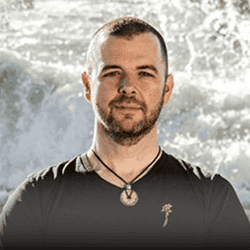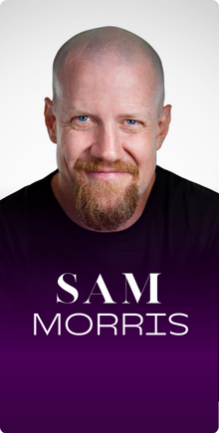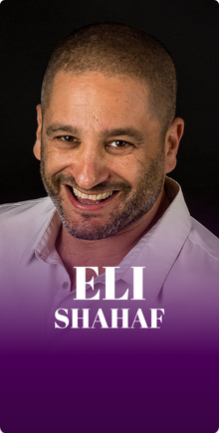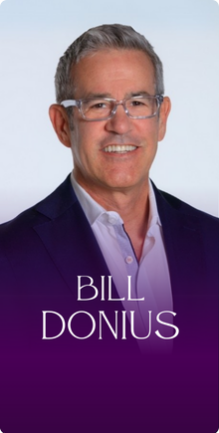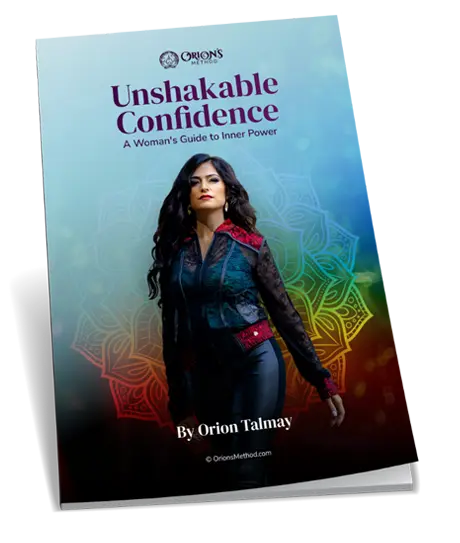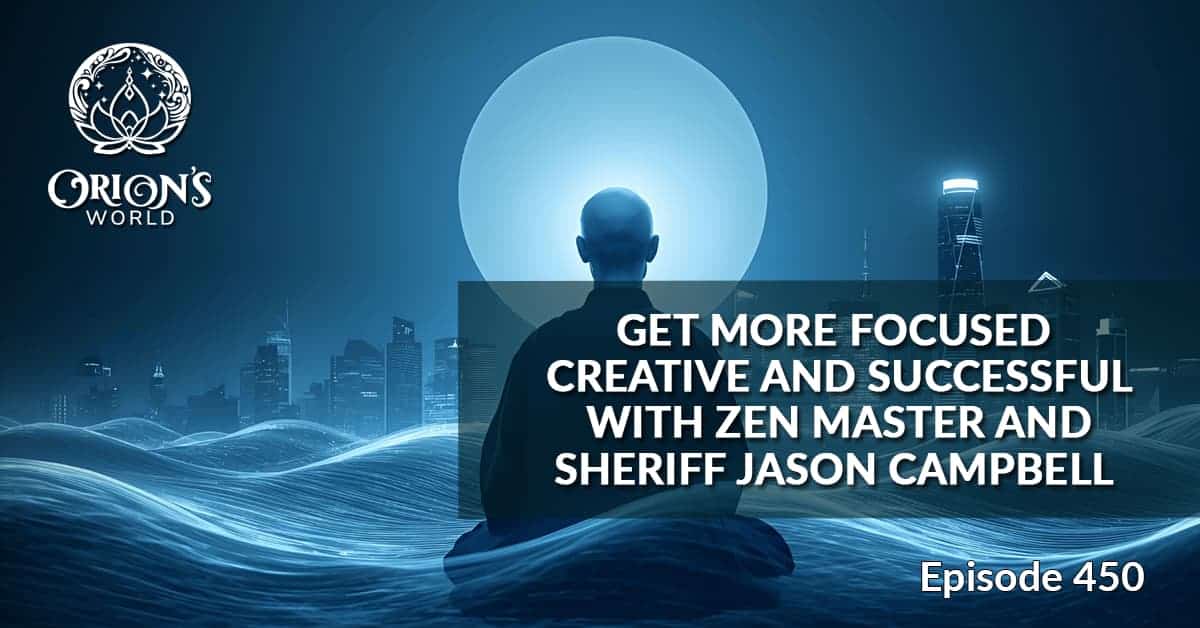
In this Episode
- [07:07]Jason Campbell connects meditation to everyday life, emphasizing the importance of making good decisions and mastering breath for wellness.
- [10:37]Jason introduces the concept of the pineal gland, often referred to as the antenna to God or the Eye of God, and its connection to the gut, which he calls the real brain.
- [14:24]Jason explains how he received a voice in his head telling him to score the I Ching, despite his initial reluctance due to the project’s complexity.
- [25:34]Jason discusses the concept of the magic of three, representing matter, energy, and consciousness, and how it applies to different aspects of life and wellness.
- [28:22]Jason talks about the changes in his training as he ages, focusing more on energy and wellness rather than physical strength.
- [31:34]Jason expounds the benefits of box breathing and how it can be practiced with or without music to help achieve a state of calm and focus.
- [37:38]Jason recounts the non-linear journey of buying and developing a mining town, starting as a joke and leading to significant investments and projects.
About Today’s Show
Hey Jason, welcome to the show!
Thank you, Orion. Great to be here.
Thank you. Before we begin, please share one of your favorite childhood memories with us.
Let’s just jump right into this. My next birthday, I’m 56 years old. Let’s go back to the 70s, when I was 8 years old. 1978 was my introduction to meditation. It came through my music teacher at the time. My first lesson, she said to me, “In music, never listen to a note. Makes no sense. Idiots listen to notes. Master’s listen to the space between notes. Because when you listen to a note, your mind is cluttered. You hear nothing. When you listen to the space, the silence, then you can hear everything because your mind is clear.”
My introduction to music was hitting a note, a gong, and listening to the note dissolve. A few years later, as your fingers get more dexterity, you can play fast, and you can do different fast things. I’ll go, “Wait a minute. What if there’s no space? What if it’s all just movement?” She said to me, “You’re such an idiot. What a stupid question.” That was just the training at the time. She said, “You listen to the space underneath. When you have sound, sound can only exist with silence. Silence is the canvas; sound comes from it when there is sound. Can you hear the silence and the silence underneath?”
So then I’d practice that. A few years later, when I was formally trained in meditation in my late teens, we would sit for four hours. I realized we were meditating. We didn’t call it meditation. We called it ‘deep listening’—just a different word. But really, it was meditation. If you oversimplify what meditation is, then you could say a break in the incessant stream of thinking.
A metaphor I like to use is this: If I have the snow globe and we say, “Hey, this is your head-on thoughts.” Look at all the thoughts. We tend to have something like 50 to 80,000 thoughts a day. But then, if you notice, when it gets very still, the turbidity settles, and as the turbidity settles, you have clarity.
There's a different way of looking at time: you don't move through it. Time runs through YOU. You stay still. This perspective slows the aging process. Share on XLater on, I have an uncle who is a master artist. I would be in his studio, he’d have these big giant murals, and he said to me, “There’s this big one,” and said to me, “Okay, what do you see in the corner there? I said, “Grass.” He’s like, “No, look closer.” I said, “Green,” “No. Look closer.” “Jade.” “No, look closer.” “Motion. Flow.” “No, no, no, no, no, no.” So then he told me the answer. His answer was the absence of red.
Remember, it hit me like a lightning bolt. I wasn’t seeing what it was; I only saw what it wasn’t. You take all the primary colors, pull out red, what are you left with? Siddhartha, this cool teacher from about 25 years ago, other people called him a Buddha, not the Buddha. There are many Buddhas. His mom called him Siddhartha—I suspect. He was once asked, “What is enlightenment?” The answer he gave—I’m sure he gave many, but this is one of the ones that got written down—was the removal of suffering. If I take you and I reach inside, I pull out all the suffering, which is just some form of attachment, resistance, and judgment.
It’s some like a soup concoction that basically one or all of those three somehow, we call it suffering, resistance, attachment, and judgment. If I pull that out, what’s left is light. Enlightened. There’s also a removal of impurities. I mean, even this. This sword was forged in 1592. It was forged the old way. It was forged by hand and fire, and you pound the steel to remove the impurities. You see the common theme here: removing impurities. Even Michelangelo made a statue. I didn’t make anything. I just removed everything that wasn’t.
That’s what came to mind as well.

You see a common theme here.
How does that reflect in your life and your relationships?
We have to be practical about everything. Meditation is the break in the incessant stream of consciousness. ‘What does that do?’ We have to live. I like to tie it into making your life better, however you define that. We have most of our thoughts every day; we have 50 to 80,000 thoughts a day. I suspect entrepreneurs have more. Those are the general numbers, but I don’t even know how to count them. Who counts that as having that number?
You have a lot of thoughts a day. Because you have the dot, dot, dot, the voice in the head, and then you have the observer that observes. You can think of the word human being. There’s a human part that changes, and the being part never changes. We can think of the being as the observer. How does this help you in your life? How does this help you with your relationships? How does this help you with creation, career, and whatever that means? But as you go on your life journey, how does it help you?
Well, at the end of the day, one of my mentors said to me years ago. This was from a business context. This wasn’t even a spiritual context, but he said to me, “Hey, you have one responsibility today, and your responsibility is to make a good decision. That’s it. Just make a good decision. If you think about how many decisions we make throughout the day, you make X amount of decisions, but okay, make one good decision now.” And I like that.
You have one responsibility today, and your responsibility is to make a good decision.
I will always say in my breath mastery training, we do all types of breathing, and you learn all types of different technical stuff and techniques, and there’s a breath mastery, and you become a master of breath. If you’re going to do something 20,000 times a day, let’s get really good at it. Breathing is the lowest-hanging fruit for wellness. You can learn all these techniques. And it comes down to one breath now. Because it’s always you, you’re always here, and it’s always now. Those three things are always the truth.
We have the past and the future. If you think about it, they really exist in our minds because there are different ways of looking at time. We all learn in our childhood how to tell time; even if you think that’s a funny concept, we draw a clock, and it’s three o’clock at six o’clock, and here’s the date. “Okay, fine. We have to learn that. We have to be practical.” We show up on time, we end on time, funny way of looking at time. But again, it is what it is. And then you master that version of time. A nine-year-old can understand what three o’clock means as well as a 50-year-old, which means that nobody understands three o’clock better. You get it. Everyone gets it.
But now we say, “Well, is that the only way of looking at time?” Well, no, of course not. There are many ways to look at time, but here’s another way. This is like the beginning of your life, the end of your life, or we could even say, “Let’s get, think smaller, let’s assume a year.” This is the beginning of the year, and this is the end of the year. And we can say, “Dun, dun, dun, dun, you walk through, and this is January, February, March, dun, dun, dun, dun.” One way of looking at it is: this is you, and this is the year, and it does that.
You stand still in the end time that has passed by you.
Yes, time runs through you because again, it’s always you, you’re always here, and it’s always now. If you can take the visual of, “Wow, I don’t even move. I’m always here, it’s always me, it’s always now, and time runs through me. I don’t run through time.”
We have the past and the future. If you think about it, they really exist in our minds because there are different ways of looking at time.
If you think about that differently, it’s like there’s a different vibration. And there’s no right or wrong. You have to do both. You and I had a time to meet this morning. If I show up 30 minutes late, I said, “Hey, Orion, time’s just running through me.” Well, that’s not okay. But it’s a different way of perceiving or viewing time. What I find is that it makes you a lot more creative. There’s more creativity. You become lighter. There’s a little more joy. It’s easier to get into the flow state.
We could also talk about how it helps open what’s called the pineal gland. There’s a whole rabbit hole of the little six chakra, the little gland right here that’s been called ‘the antenna to God’ or ‘the eye of God.’ We have this energetic chord that goes straight down into your gut, which is actually your real brain. Sometimes called the “dantian” in the last 20 years or so, it’s now called the microbiome. We can call it whatever we want. This is the brain. This is the monkey brain, gut. That’s the real brain, because then you think to yourself, “Okay, in my life, how many times is my gut wrong?”
Not too many. Even if it was wrong, was it really your gut, or was it just a misinterpretation, or was it emotional? Because feelings are feelings. Feelings are different than your gut. We get happy, we get sad, we feel high, we feel low, we go up, we go down, and feelings flow through. Fine. But the gut is a brain that knows everything, and you say, “I got a gut feeling about this or my intuition says this. It’s probably right.” I would bet on the intuition more than I would on the monkey mind. Monkey mind makes mistakes all the time.
How do you dance between “I’m standing here still” and “Time is moving through me?” I want to be practical.
Very masterfully. You start with a sense of humor. What I like to do is have disciplines that are unwavering. You have the turtle and the rabbit. The turtle, slow and steady, tends to beat fast and erratically. But see, we need structure, and we need chaos. If you’re too structured, well, that’s not a lot of fun. If you’re too chaotic, it’s hard to get anything done. Another way of saying it is like, if you think creatively, if you tend to be a creative person, you tend to be nonlinear in your thinking. It's always you, you're always here, and it's always now. Those three things are always the truth. Share on X
One of my music projects is that I turned symbols into piano music, an old language of the I Ching, which is so 6,000-ish years old, maybe older, of symbols, and I turned it into Zen piano. There are words, and there are teachings, but I try to bypass the cerebral activity and turn the learning into a sound to drop the cerebral, open up the pineal. There’s a teaching in the music, but there are no words. That’s about as nonlinear as you can get. That’s a creative interpretation.
How does it even come to you to translate something like the itching into music? How do you get into the state where you’re so open to receiving?
There’s a lot of monkey work involved. There’s like practical work, and then you let it all go. When I was in my teens, I had a jazz pianist who I was training with, who said to me, “Okay, here’s what you’ve got to do with piano. You have to learn every scale there is, know every chord, know every theory, be able to play everything forward, backwards, left hand, right hand, up and down, and completely master it. Once you master it, forget it all. Forget all of it.”
There’s a teaching in the music, but there are no words. That’s about as nonlinear as you can get. That’s a creative interpretation.
And so I remember thinking, ‘Ah, okay.’ I thought there was real wisdom there because if you’re going to get good at any skillset, I call it monkey training, on the piano, you gotta learn your skills. If you’re going to be an entrepreneur, well, there are some nuts-and-bolts entrepreneurial skills you have to learn and know how to do, no matter what your career is. Sometimes mastery will come with: you get really, really good at something, and you get so good at it that you can forget it. You can forget all the rules of it.
And so, to answer your question, I actually didn’t want to do it. A voice in my head told me I had to do it. I had completed a project, I don’t know, eight, nine years ago, I completed a nine-album set, and I was like, “Okay, I said what I needed to say. I’m good. That’s it. I had my nine albums. I’m to focus on something else now.” And then a voice in my head said, “Score each.” I said, “No, I don’t want to score each. I’m not scoring each thing.”
I know how much work it was. Well, a hundred albums later, here we are. But a lot of it was that I had to create a Rosetta Stone, like with the symbols and the themes, and there had to be a stone with it.
I have something to go back to with the themes. I’ve been studying each of these things for about 40 years. I know the language of that, and then I know the musical language, so a lot of it was just bridging the gap, but the Rosetta Stone took me a good year to just keep thinking of the key centers. That’s the mundane work. But once you have that, I have everything set up and all the symbols. I have all the words. I have the teaching. Then there’s a process of I don’t write anything; it comes through me.
Sometimes, if you can’t remember something, it’s because you’re thinking about it. Then you have to not think about it, and the name or whatever comes to you.
Again, this is a meditation technique. There’s this old meditation technique. Siddhartha used to teach it. It’s in his secret teaching of a mural where you have one Buddha in the middle and 13 Buddhas around, and you think, “That’s a nice painting.” Well, there’s a teaching in that. And the learning is: Buddha is in the middle, leaves the middle, and meditates on the side. And then meditates again, meditates again, meditates again. In meditation, when you’re done, stand up, step outside yourself, and see yourself. It’s almost like a ghost, and that little visualization keeps it going in the background. That’s how you meditate 10,000 hours a day. It takes about a year, and you can meditate for 10,000 hours a day because it runs in the background.
You can do that with other creative things, not just meditation. I will write music. I will start something on the piano. I will stand up, and I’ll see myself doing, I’ll say, “Okay, you finished that. I have other things I need to do.” And then I come back, and there’s something there. “Oh, okay. What’d you come up with?” It’s almost like an internal conversation. It can maybe seem a little wacky to an outsider, but there’s a conversation that goes on, and something comes out. It doesn’t work with everything. If you try it with washing the dishes, that doesn’t work. You come back, you still have a dirty kitchen, like, “I gotta clean it or get it cleaned.”
It’s fascinating, though. Can everyone do that? Just step out and look at themselves, or is there a way to get there?
Well, it’s a really good question. Can everyone do it? Well, I certainly don’t know the answer to that. What I would encourage or suggest if this is speaking to you, if this is a technique that you think is interesting, next time you’re meditating, you just stand up and see you. It’s almost like a ghost. It’s like, here’s you, then you step outside of you, and then you just see you, whatever, same clothing you’re wearing, same everything, just being still and meditating. And see if it knows how you feel. See if there’s an accumulation effect, like running in the background. See, we all have something running in the background. And then the question is: did you do it on purpose or was it random? Did you plant something good in the background, or is it something weird from childhood?

And we say, “This is a very Taoist viewpoint,” but we say, “Okay, if you had smoke in a room, how do you get smoke out of a room? Well, you can take it, push it, and brush it, or you can just let fresh air in.” Then you let in the fresh air. And then it dissolves the smoke, and it’s easier to let fresh air in. That’s how I think of a lot of meditation and a lot of healing modalities. Do you want to remove it or are you trying to, like you say, a war on cancer or a war on this and a war on that? That’s one way of looking at it. Another way of looking at it is to let in the fresh air. You put either the chi, the prana, the qi, the gi, the energy, whatever word we want to use for it.
When you’re in that state, and there is this ghost part of you that leaves and looks, and what does that part do? Just observe? Do you split into, like, a part of you going into a different dimension? How does it work?
The short answer is I don’t know. The other answer is, “Is it another dimension? Is it another universe? Can we go quantum and look at the wave, the particle? Do you really know for sure? Why don’t I? I know it works.” That’s what I know. Sometimes it depends on the reference. It depends on what you like. What’s a good visual for you? Because sometimes when I teach this, I’ll say, “Okay, stand and see you and see it as a ghost.” And that works for some people. Now, some people don’t work for some people. It’s just like, “Oh, I want to put it here. You think it’s here in the background.” “Oh no, it’s out there.” “Oh, okay. Where is it? Does it even matter? I don’t know exactly where it is.” It’s kind of like memory.
Feelings are different than your gut. With feelings, emotions flow through. In contrast, the gut is a brain that knows everything.
I don’t think about memory; I prefer not to carry a lot of things around in my head, but if I need to access something, I like to. Like you, I remember seeing you a couple of weeks ago. It’s like right when I saw you, boom, all these memories of our conversations over the last couple of years, they all just hit me at once. Then, I remembered, but I wasn’t walking around with those conversations.
See, I didn’t have that. I think differently from you. When I saw you, it was just a warm, fuzzy feeling. I remember zero conversation. I’m just like, “I like him, let’s talk.”
Everyone has a slightly different reference in how they think about it. Everything I need to know is stored up there. Now, you can make a cloud analogy. I don’t like that analogy because the cloud is just someone else’s computer. I store something in the cloud, someone else’s computer. It could be in the universe, it’s in the ether, however we want to see it. Everything you need to know is there. It’s just like having a line and just accessing it. And that’s what it is. Sometimes, if you can’t remember something, it’s because you’re thinking about it. Then you have to not think about it, and the name or whatever comes to you.
I want to come back to the space between the notes and time. How do you feel like that’s connected?
The discipline of the space is a form of meditation, and there are so many ways to get to it. Cause we, again, are back to meditation. Well, if you oversimplify it, it’s a break in the incessant stream of thinking. So how do you get there? Another childhood story here. When I was a teenager, I asked my martial arts instructor. I asked my martial arts instructor, “Hey, what’s Zen?” And he looked at me, he smiled, and he side-kicked me. He hit me hard. He cracked me right in the stomach. Went flying across the dojo, hit the wall, and sat there in a daze. He smiled and walked away. Didn’t say it was my Zen lesson.
In meditation, when you’re done, stand up, step outside yourself, and see yourself.
And he was right. So he let me experience Zen in the moment because, as I flew across the dojo, there was no past, no future. There was only now. That was my Zen. And if he had said to me, well, see, Zen is the break in the incessant stream of thinking because it’s always you, you’re always here, and it’s always now. And you drop the cerebral activity, and then you open up the pineal gland, and then the lion comes down into your gut, your dantian. No, I wouldn’t still be talking about it if he had said that. If he had used words to explain that to me, I would have forgotten.
I had a Zen or flow moment during my first Aikido test, when time stood still, and I could see exactly what my hands were doing. Everything was in slow motion. It was really cool. I wish to tap into that state quickly whenever I want, but you have a lot of practice and get into those Zen and flow states a lot.
It’s a really good point about the whole part of Aikido. It’s really about self-defense against an attacker. Well, that’s the skillful means that you use to achieve a Zen state, maybe not even the weird word, because it’s not something you achieve. It’s something you experience. To experience a Zen state, it’s like these are the skillful means, it’s like Iaido with the sword. You see, you don’t swing a sword to learn how to cut. You swing a sword to develop your mind. So it’s all in the mind, but the sword is the skillful means. There are Zen archers, and I’m not a master archer, but there are Zen archers that will do whatever, 20 years or whatever the time is of Zen archery. Once you reach that state, you put down the bow.
You say, “Why do you put down the bow?” So that you don’t get attached to the skillful means. Because it’s not about the bow, it’s about the mind. Interesting. Now, I think that’s a little extreme. If you like shooting, then keep shooting. I have no plans of putting down the sword. I like the sword; it brings me joy. But it’s being very clear on it’s not about the bow. The bow is the tool. It’s like, when you build a house, it’s not about the hammer. Nobody cares what hammer you use. It’s like, let’s get a house. So that’s the same idea.
When you listen to a note, your mind is cluttered, and you hear nothing. But when you listen to the space, you can hear everything because your mind is clear. Share on XYou’re a seven-degree black belt.
Yeah, I’ve been doing this a long time.
Which martial arts?
We do a lot of them. Do the internal, external, the Chinese and Korean styles, the Kung Fu, the Gong Bu and all the Tai Chi and the Qigong. What happens is you go through the different arts. Say there’s a power of three. We call it warrior scholar sage. And you go through the different steps, and the warrior is the warrior training. That’s the strength. That’s the fighting skills. It’s all the weapons skills and such. Scholarly is the medicine and understanding of each thing. Let’s understand the patterns and the five elements, and see how they play out in the sage, which is what I was talking about before: dropping cerebral activity and opening up the pineal gland.
In so many different cultures, we have this Holy Trinity, or this magic of three, and it’s sometimes called, here’s one version of it: Jing, Qi, and Shen. Not necessary for you to remember the words, but let’s remember the meaning, and the meaning is that we are made up of matter, energy and consciousness. The matter is everything you can see, touch and feel. The energy is qi, prana, bioelectrical energy, breath, and emotion.
You can’t hold emotion in your hand, but we all know that emotion exists because it doesn’t matter; it’s energy. And the consciousness is the observer. One metaphor, if I have H2O, I have ice, water, mist, solid, liquid, vapor. The Catholics teach this: the Father, the Son, the Holy Ghost—three types of meditation. There is sitting, standing and moving. And then we have the warrior, the scholar and the sage. And so it’s the magic power of three.
What do you think the discipline of martial arts taught you? Would you recommend anyone try it on?
Zen is the break in the incessant stream of thinking because it’s always you, you’re always here, and it’s always now.
Is it for everybody? Depends. Let me even, even back up here because a lot of parents will say, “Hey, I want to get my child into a martial arts program.” And they always say, “What style should I have them do?” “Oh, is it taekwondo? Do I have a karate? Do I have them do a keto?” said, “No, no, no, no, no, stop, stop, stop. Here’s what you do. Mom, this is what you do. Dad, yes, but moms is usually better at this. You walk into the school and find the one that’s closest and most convenient. Just walk in, stop, and just feel for one of two words, yes or no, back to the gut, and just you can eat.”
I have been to three martial arts schools with my son, and it was a nope, nope and nope.
There’s your answer that has nothing to do with the style, nothing to do with anything you knew. That’s cool that you did that. It’s not just martial arts. You take them to a gym school. Take them to an elementary school, whatever it is. You just know. And if you want, you can even set the intention. As you’re walking in, say, “Okay, the answer will come to me.” If this is the perfect school, it will show up in the ideal way, or you set some sort of intention like that, where you just walk in, gunk.
And you know what it is. And then, if it’s a yes, have the conversation, go through the intro, and let them do the whole process, whatever their process is. Because it’s not, especially for children, it’s not about the style. You can make any style awesome. It’s the teacher, and it’s the energy in the school. Is it the right energy for your child? And then also you can do the same thing for yourself. Sometimes it’s easier for moms to do it with a child. Sometimes moms know, better intuitively, for their children than what they see for themselves. You just go, “Okay,” because as you get older, you just have to be careful of injury. That’s what you have to be cautious of.
My training now, I’m looking at 60. So my training now is very different than when I was 21. I did all types of things at 21 that I don’t do anymore because I’m in a different season, a different season of life. And so the training that I do now is more for energy. It’s to put energy into my body and keep filling it up, because when you’re younger, energy costs less. As you get older, you experience inflation in energy. It just costs more. So it’s like, “Okay, well,” and then you have to be more masterful about putting energy into your body.
Here’s a funny thing, though, that I see this all the time. So, “Okay, well, what do I do? Well, what’s most important? Well, there are a lot of important things. How about sleep? Yes. How about the nutrition and foods that you put into it? Yes, okay.” Then you can get into sunlight and exercise, and there are all these things. And you’ve had people who do biohacking. What a weird word, biohacking. I don’t want to hack anything. Hacking, like, I’d like to maybe go with ‘bio mastery ‘- better word.
We actually had dinner with Dave Asprey the other day.

He’s awesome. I also just had a nice conversation with him. But that’s just the word. And there are all these different things. Wellness is for another thing, but what is the lowest-hanging fruit in wellness by far? Second to none. ‘How long can you go without food? How long can you go without sleep? How long can you go without water? How long can you go without breath?’ You get more energy through the breath. You expel more toxins through the breath. ‘Can you do something 20,000 times a day?’ So my suggestion is that wellness is mastering your breath. Pursue mastery of it, and there are all these different techniques.
And there are tons of them, but here’s the nice thing about it. Even if you start with just like a box breathing, four seconds in, hold for four, breathe out for four and hold for four. I write music for this. I have a bell playing every 4 seconds. You just listen to the music and don’t have to think about it. Even that, even if you do it poorly, even if you do it with a bad attitude, even if you don’t even believe it, and grumble, grumble, what’s this stupid breathing, it still works. And I make the metaphor, it’s like pushups. If you did 100 push-ups a day, every day for a month, with bad technique, a bad attitude, poor focus, poor form, and poor concentration, and you did it, what we would all say, “horribly,” is: it still works. You’re still gonna be stronger at the end of a month.
You’ll be stronger, but not so that it’s not gonna be that good for you.
No, maybe not, but you will be stronger is my point. You can do box breathing poorly, that’s my point. And you can do it with a bad attitude, and it still works. I don’t suggest that. If we’re gonna do it, let’s do it masterfully. Let’s do it well and with a masterful attitude. But that’s my point, how it’s the lowest hanging fruit. Especially if you take a lot of pills, potions and lotions, and I love all that, all the supplements and nutrition and everything above is very important. But if you’re not engaged in breath mastery, none of it is nearly as effective.
We are made up of matter, energy, and consciousness. The matter is everything you can see, touch, and feel. The energy is qi, prana, bioelectrical energy, breath, and emotion.
I don’t know how you do this. You manage to quiet the world and produce a lot. You have over 100 albums that you created. How do you find that discipline, and how do you connect? How do you make? How do you get new ideas?
First, if I think about it, none of the ideas are mine. It’s flow, it’s flow through. That’s it. I have to put my name on the album. Whose name am I going to put on it? But I think of it, don’t write anything.
You can put my name on one of them if you like.
It’s all flowing through, but it’s almost like it’s always you. You’re always here, and it’s always now. How I think of time is what I said before. It’s almost like the time I don’t move, even when I’m driving, I’m not moving—a minute. You’re going from point A to point B. Yes, from one viewpoint, of course. But actually, everything is coming this way. So I stay still. And I also find it tends to slow the aging process. Everything moves a little slower when you’re talking about your Aikido and everything moves a little slower and some of the repetitive thoughts start to drop. And then the way you think about, like, attraction. Well, there’s an old saying: A tiger never hunts its own weight because a tiger knows everything; eventually, the tiger that needs to walk in front of the tiger. So I kind of think the same way.
If everything’s coming at me, if I like hit a, like a tuning fork or a giant gong that has a vibration gang and I send it out that way, well, that’s going to line up somehow and come back. Now I was just teaching breath mastery four mornings a week. I have a group that I work with. And one of the things I was just talking about this morning. So this is fresh in my head. Every life. You can look at what we call, that person’s so successful, that person’s so interesting. And they have a lot of things together, but you just have to know there’s always a shit show underneath.
Every life has a shit show. Everyone, myself included. Not the whole thing is about, of course, but there’s always a shit show somewhere if you look hard enough. Why has to be that way? Has to be because there’s no tomato without manure. At the end of the cupcake, there’s a pile of shit. Life is messy. Relationships are messy. Even though I was taught a few classes, I had this, and I had another meeting, but this morning, from like 5 to 6 AM, I was dealing with problems. I was dealing with mining problems.
We’re gonna talk about that too. We’re gonna talk about how you are the Sheriff of your own town.
You can’t hold emotion in your hand, but we all know it exists because it doesn’t matter; it’s energy, and consciousness is the observer.
The town’s problems. We have, we own a mining town, a few partners, and so we have, the city, it’s Cleter, Arizona. It’s a famous town out here. And then we have 4,000 acres of gold, silver, copper, and antimony mines. And when you’re there, there are problems, I mean, there are a lot of awesome things, but like anything, there are problems, and then you solve a problem. That problem’s done.
What are some mining problems you have?
There’s everything. There’s turning. Well, first of all, turning into gold, or this is one of our coins. This is one of our town coins. It’s called it. Let’s see if it’ll focus. There we go. There’s the clearer coin. That’s the clearer general store. Let’s say half an ounce of silver, but we call it a coin. We can’t call it a half dollar. If I call it a half dollar, we’ll get, we’ll get locked up.
One day I’ll have one. I know you showed me that one.
Can’t call it, it’s a dollar, it’s a half ounce of silver. Well, there’s always, whenever you have people and machinery.
Did you know you had gold before you bought the town?
Well, yes, it was an old mining town, and one thing led to another. We started with the city. Then we started with I’m giving you the real short story. Then, like 260 acres right outside of it, and then that over time went where it’s a public company now. And that turned into 4,000 acres, but there are 15 former producing mines. There are many minerals out there. The Bradshaw Mountains are in this area of Arizona. 1.4 billion years ago, the plates collided. And when plates collide, do that. And that’s why there’s gold in them, they’re hills. And this was part of like the 1800s, you had the 49ers in California, you had the San Francisco 49ers, that’s what it comes from down into Bisbee from 1877 around there. Cleter was 1864. So all that gold rush of the 1800s was in this area because of events that happened over a billion years ago.
All the supplements, nutrition, and everything above are very important. But if you’re not engaged in breath mastery, none of it is nearly as effective.
Wow, amazing. I mean, now you’re the sheriff. What does that mean for you?
That was a very nonlinear thing. During the pandemic, I saw a news article that a town was for sale. Didn’t even know you could buy a city. I sent a text to my friend, Joe Polish, which is how you and I met in his network and the Genius Network. And I was a joke, and I said, “Hey man, want to buy a town? Ha ha ha.” He texts me back. He’s like, “What? Maybe I don’t know. I don’t know anything about buying a town.” I’m the least qualified person on the planet to buy a town. Six months later, we own the city.
So, then that, it was one step, one step, one step that we’ve done. And this wasn’t the plan originally. Like when I sent them that text, I didn’t say, “You know what? In four years, we’re going to have 4,000 acres of gold. We’re going to have a drill program. We’re going to have the bulldozers. We’re going to be making roads. We’re going to be minting coins. We’re going to have helicopters flying over.” No, I have no idea. It started as a joke about buying a town, but, back to what we were talking about before, it’s very nonlinear; sometimes I think life is, too.
Who made you sheriff? Did you make yourself the sheriff?
Self-appointed. Not just completely. When you own the town, it’s not a democracy, and Joe’s the mayor. We know we had a badge. Actually. Gave it away. I gave away the badge. Yeah, I didn’t. It’s okay. I can make another. We’ll give away coins. I give away the badge and swords.
Do you have a star in all? Like a real gold star? No, that’s disappointing. How do you feel your music influenced people?
My visualization for the music. If I take this pencil, so what is music? Well, if I take this pencil and I vibrate it 20 times per second, up to 20,000 times per second, I’m not fast enough to do either one, but you and I will perceive that as sound. If I do it 50,000 times per second, you and I won’t hear that, but a dog will. Eighty thousand times a cat will, 100,000 times or so plants communicate to each other. So sound is just vibration. We can’t hear it, but if someone’s good with plants and sensitive, you can hear it. You don’t listen to it through your ears, technically through that vibration, but you can feel the plant. I’m not a master of plants.

I know, I do, I feel them. I feel plants, and I think animals.
They talk to you. And then you can translate it into sound. A friend of mine said, “Hey, know, a plant of hers wasn’t like, wasn’t doing well.” And she said, “Where do you think I should move it?” And I said, “Did you ask the plant?” She’s like, “No, I didn’t. It’s like, yeah, ask the plant. Where do you want to go?” Like, “Okay.” Just say, “Okay, what do you need? And just dunk it still and see what you feel, and then trust yourself.” If you already do that, there’s this intuition that they speak to you and that plants respond to words; we know that.
We respond to words and music. This means we, the water in our body, react to every word we say.
Where 60 to 80 % water is present, it doesn’t just pick up vibration; it picks up intention. But here’s the interesting thing about music. At some point in their life, music gave them chills. Like, “Wow, what an interesting concept.” A song can give you chills, but it’s different for everyone. It’s not the same song. You can’t just say, “Oh, this is the one song that gives everyone chills.” It doesn’t work that way, but there was a vibration; it had to do with something you were going through, a life phase, the music just spoke to you, and it just lined up like a tuning fork. Boom, perfectly lined up. And it spoke to me. So different music speaks to other people. And if we look at pop music, like most popular music, it’s about “I want you, I need you, I miss you, let’s party in social commentary.” And the music I write, that’s not the music that I write.
But I do love that type of music. We all have our favorite bands, bands that I love and bands that I grew up with. But the music I write is geared to drop the cerebral activity. That’s why most of it’s instrumental. And I have a handful of albums with mantra, but they’re not in English. They’re old mantras. I have one album that I did in English. And so that was to teach the five elements. And my sister sang it, and I did all these five-element poems, wood, fire, earth, metal, water, which is not literal wood, literal fire. It’s the metaphor for the repeating pattern of five.
But back to answering your question, the purpose of the music is when you listen to it like one of my Zen piano albums, don’t listen to the notes back to see if you can listen to the space you put on headphones, the songs are three minutes. Just, just listen. If the cerebral activity drops. And when that drops, maybe something creative in your life shows up. Like a lightning bolt, or something is activated.
I was actually listening to your music before we started this. My little one was in the room, a little upset, and we talked, and having the music in the background was really great. It’s very enjoyable. Like, don’t like you’re genius. I can’t imagine how you create so many distinct tracks.
Never be busy. Just be present, and that's enough. Share on XWell, thank you. Let me give you another metaphor. It’s the metaphor of the lattice and the vine. We have a lattice, which is straight and structured, and the vine is chaos. They need each other. What do you call a lattice without a vine? Firewood. What do you call a vine without a lattice? Weeds. But you put structure with chaos. You can have something beautiful. And that’s why I like to have real, structured, disciplined stuff. My not-so-secret secret is the reason I wake up every morning and teach. Is it a business? But that’s not the point. I don’t run it like a business. I run it like a Shailen temple. I don’t have any advertisements. There’s no follow-up. There’s no website. You have to know me or know someone in it even to get an invite, but I really do it. Not-so-secret secret is that it forces me to breathe every morning.
Take me so take me through your day, you wake up in the morning. What do you do? Like you teach, you have to take care of your mind.
I have very consistent things. I also have things that are just, and I try to leave space for them. Some days I’m up in the town. Some days I’m running around in my mind. Have another retreat center here. Have a brick-and-mortar wellness center where I do things as well, or if I’m in production, I’m thinking about music and going through musical things, or sometimes nothing. I also leave a schedule open.
See, someone will say, “Oh, you must be so busy.” I say, “No, no, bees and beavers are busy. Never be busy. Just be present. And that’s enough.” If you look at my schedule, sometimes it’s like, even now, we have a hard stop in three minutes because I have my next one. Today’s just one of those days. That day, so that day is scheduled, or I have some days where it’s just open, but really, what’s the difference?
It’s always you, you’re always here, and it’s always now. I may have 10 other things scheduled for today, but I have none. What’s the difference? And if you just stay, don’t you stay in the moment and be practical, we have business to do, and we have to be very practical and be masterful with time and masterful with schedule and all that stuff, but it’s always you, you’re always here, and it’s always now.
What are your top three quick tips for living a stellar life, and where can people find you?
It’s always you, you’re always here and as always now. Here’s the second one. Take one breath now. And that’s it. Okay, then one breath now, but that’s it. One breath now. The easiest way to find me is at zenpiano.com. And I don’t send out a lot of emails. You can sign up for stuff there. If you are interested in breath mastery, just be resourceful and find me or find someone who is in it. And you can find all my stuff on Spotify, iTunes and Apple. Kingglobal.gold is the website for the mining project. It’s a public company, so everything in that is quite transparent.
Amazing. Well, thank you so much. It was a pleasure and an honor to have you today. Thank you for your wisdom and for everything you shared. And I just appreciate you. Thank you for being here.
Well, you’re very welcome and likewise, Orion. I appreciate you and thank you for having me.
